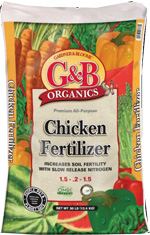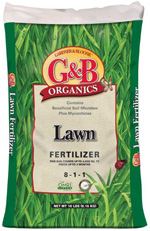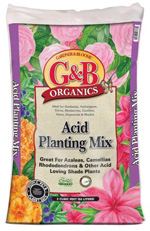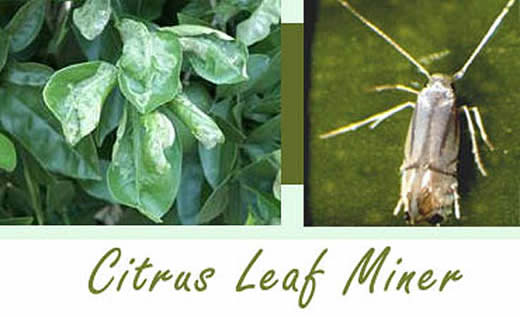|

      
|
 | "Don't wear perfume in the garden--unless you want to be pollinated by bees." |

|
Whether they reside in cold zones or in temperate regions, gardeners are incorporating more and more succulents into their gardens and homes. Why are succulents such a growing trend? Succulents can be grown indoors or out, can take full sun to partial shade, are drought tolerant and require little maintenance. Their diverse foliage, in terms of color and texture, provide endless possibilities for incorporation into the garden or when grown in containers. Add to this their beautiful and unusual blooms in a wide array of colors and you have a sure-fire recipe for successful gardening! Succulents flourish in arid climates by storing moisture in their leaves, stems or roots. This ability provides them with their drought-tolerance, allowing them to access water when it is most needed. Succulents that store water in their leaves have plump, fleshy foliage; these leaves can be many different shapes including lance-shaped, paddle, rosette or teardrop. Foliage color can be green, blue-gray, silver or variegated. Succulents that store moisture in their stems tend to have enlarged branches and stems and those that store moisture in their roots have bulbous roots that can be seen at the base of the plant, above the soil line. There is much confusion about differentiating cacti and succulents. How do you know which is which? What are the defining features of each? Because of their ability to store water, all cacti are succulents. But, all succulents are not cacti. Here are a few ways to identify them:
Since most succulents come from warm, dry, frost-free regions, many will not tolerate prolonged wet conditions. There are a few, though, that will thrive in colder, rainier climates such as certain types of Lewisia (those native to the Pacific Northwest), Sempervivum (from europe) and many Sedums. The one common requirement for all succulents is fast-draining soil. A lot of water combined with clay soil is a sure death sentence. Many succulents will thrive in full sun but there are also many varieties that appreciate, or even require, some shade. There are low-growing succulents suitable for use between stepping stones and others that grow large enough (some to 10' or more) to provide a striking focal-point in the garden. If in doubt, be sure to ask us which are preferable for your area; it is safe to say that there is a succulent for (almost) any situation. In mild winter areas, mass plantings of succulents provide a good alternative to more thirsty lawns or flower beds. Succulents can also be attractively paired with drought-tolerant perennials; the succulents will provide great texture with their wide variety of leaf colors and shapes, while the perennials will provide a longer season of flowers. Many succulents make great groundcovers. Just be sure that the area you plant them in will receive no foot traffic; their fleshy leaves and delicate stems are easily crushed and broken. Succulents require little maintenance; occasional removal of spent flower stems and older leaves is usually all that is needed. If grown in the garden, one light feeding at the beginning of the growing season should be enough. Larger and later-blooming kinds, as well as those grown in containers, may benefit from additional fertilizing. Propagating succulents is easy. When taking cuttings from stem-forming types, just let the cut ends form a callus, then stick them right in a well-drained soil. They will root and take off right away. Some types of succulents (agave, aloe, sempervivum) form offsets around the parent plant. These offsets can be removed and replanted. Succulents are a diverse group of plants that will help you add unique form, texture and foliage color to your garden without much care of maintenance--what a deal! |

|
Citrus leafminers have become a common pest in citrus trees across the country in recent decades. Diagnosis of an infestation is as simple as looking at the bottoms of the leaves on your tree. They leave a little squiggly trail through the underside of the leaf as they eat, and poop, their way through it. Trees affected include all citrus trees, such as oranges, lemons, limes, and grapefruit, but also related species like kumquat and calamondin. Citrus leafminers are the larval phase of the Phyllocnistis citrella moth. The female leafminer moth lays its eggs on the bottom of a leaf, and when they hatch, the larvae will burrow under the outermost layer of the leaf. At first, the mine will be barely visible, but over the course of a few weeks the larvae will grow and molt four times, growing larger and making the mine larger and more visible. Eventually, the larvae will emerge as a pre-pupae and roll itself into the edge of the leaf while it transitions into its final phase of life, a little moth. Citrus lLeafminer moths are small, silvery or white with brown and white markings and distinctive spots at the ends of their wings. Citrus leafminer larvae prefer new, tender growth to eat. Old, hardened leaves are not on the menu. This makes older established trees much less appealing and keeps the damage that leafminers cause them to a minimum. Younger trees may have a harder time with them, but generally will recover just fine as they grow larger. Even significant infestations will rarely kill trees, but may inhibit growth. The suggested treatment for citrus leafminers is Spinosad, a pesticide that is derived by fermentation by several species of bacteria. Since leafminers are eating the insides of the leaves, Spinosad won't do much for miners that are currently in the leaves. It will, however, interrupt the life cycle when young larvae first eat into the leaves, or burrow their way out at the end of their larval stage. Spinosad is considered safe for pets, and approved for organic agriculture, but exposure can cause skin and eye irritation, so it's best to avoid applying it on a windy day - and wash your hands after its application. Defending your young trees from further generations of citrus leafminers will help them thrive to become large, productive trees. Preventing this generation from birthing the next will go a long way towards that goal. |

|
Gardening can give you a great workout, especially when you incorporate all the weight lifting that comes from schlepping plants, packaged soil, mulch and wheelbarrow loads of garden clippings. It can also lead to injury or muscle soreness if done incorrectly, so it's very important to lift smart when gardening. When lifting heavy items, squat down, get a firm grip and lift using your legs, not your back! By lifting with your leg muscles you'll gain more lifting power and save yourself a trip to the chiropractor. Don't be afraid to ask for help if something looks too heavy; it's a smart way to save yourself from injury. Use a wheelbarrow as much as possible when hauling bags of mulch, rocks or large plants from your car to your garden. With packaged soils, either empty bags from your car directly into the wheelbarrow and shovel it out where needed, or haul the bags to the work site, cut the bags open lengthwise and then dump them where they are needed. Lifting or carrying heavy rocks or plants can place a real strain on the back and shoulders. Try tipping your wheelbarrow forward as close to the plant container or root ball as possible. Gently roll or rotate the plant into the wheelbarrow and then bring the wheelbarrow to a standing position. Then simply take it to the planting site and reverse the process. Remember to prepare the hole first. Then all you have to do is remove the container and slip the plant into the hole. With ball and burlap plants, you can roll them directly into the hole and then cut the rope and excess burlap. This will help protect the plant roots as well as minimize the stress on your body. Remember to pace yourself and listen to your body. It will tell when you when it has had enough and it's time to quit. Doing one project at a time will help to keep you from overworking. Don't forget to stretch when you are done to help reduce muscle soreness. Then go treat yourself to a nice bath or shower and a great meal. After all, gardening should have its rewards! |

|
Blossom End Rot is a common problem in the garden. There are a number of reasons for it, but the symptoms are unmistakable. An otherwise great-looking fruit will have a sunken, soft, rotten bottom on it. There's nothing worse in the garden than picking a beautiful fruit and turning it over to see it ruined. Most commonly seen in tomatoes, Blossom End Rot also afflicts peppers, squash, and melons. It is mainly caused by a calcium deficiency, but that does not necessarily mean that the soil is lacking in calcium. Most times, it is a byproduct of irregular watering. To be sure your soil has enough calcium, add vegetable food that is high in calcium, and you can also spray on a high calcium foliar spray. Another factor can be that your soil is too high in nitrogen. Avoid adding high nitrogen fertilizers and uncomposted manure. These will help your plants grow leaves, but prevent it from producing fruit. Yet another thing that can cause problems is an imbalance in soil Ph (soil that is too acid or too alkaline can reduce the plants' ability to absorb calcium). If you're not sure, you can get a soil testing kit or take some soil into your garden center to be tested. The biggest thing is to make sure that when you do water, the water gets down to the roots evenly. You're better off watering every second or third day and soaking the beds deep than doing a short watering every day. You should also be watering at the soil level, whether by using drip lines, soaker hoses, or by flood-irrigation. Water slowly and for at least 10-15 min to give the water time to soak into the soil. Avoid spraying the leaves, as it encourages fungus and can wash pollen out of the flowers. However you go about it, you should be checking moisture levels before and a while after you water. If the soil is already moist, DO NOT WATER! It also helps to pay attention to the forecast. If rains are expected, you should hold off on water to avoid nature doubling down on the water. It also will help to have a good layer of mulch around your plants to retain moisture and to keep weed levels down. Luckily, Blossom End Rot is a problem that can be solved. If your plants are afflicted, try some of these steps. Pull off affected fruits as soon as they form to keep the plant from wasting energy on them, and keep adjusting your watering until it goes away. Any changes you make will only be seen on fruits that begin to form after you've made them. With a little time, and a little practice, you'll be growing some great tomatoes. |

|
Is it a bug or is it a fungus? Telling the difference between insects and fungus or disease problems is not a simple task! Remember when giant whitefly first showed up? Many thought it was fungus because of the fuzzy filaments hanging from the undersides of the leaves and reacted by spraying fungicides, which weren't any help at all. Actually, insecticides didn't help much either--as we soon found out--due to the many generations present (some of which were resistant) at the same time. Since the mouthparts of giant whiteflies are long and tubular, a good blast with the hose is actually one of the best methods of getting rid of them!
Another example: small holes in the leaves of plum, nectarine, almond, and apricot trees are actually symptoms of "shot hole" fungus, but if you see tiny holes in your eggplant's leaves--you probably have flea beetles! As you can see, diagnosis is not always easy! Bring a sample in and we'll try to help diagnose problems and find the best cure for your problem. As always, the first and best line of defense is prevention. Keep plants healthy--avoid injuries (such as hitting trees with lawnmowers, etc.). Choose varieties that do well in our area and are naturally resistant. We can help you choose resistant plants that will thrive for you. Disease occurs when the conditions exist to allow it. It is an interaction between the pathogen (causative agent), environmental conditions, and host (plant). All these must be present. That's why prevention is so important. Consult our nursery professionals for help. Spraying Tips:
|
 |
|
What You'll Need:
Directions:
|
 |
Written content © Garden Partners LLC, or respective authors. All Rights Reserved. Privacy Policy. All written content contained in this site is protected by United States copyright law and may not be reproduced, distributed, transmitted, displayed, published, or broadcast without prior written permission of Garden Partners, LLC. You may not alter or remove any trademark, copyright or other notice from copies of the content. |



 Many other bugs also leave damage that looks much like fungus.
In some cases, such as aphids (honeydew produced by the aphids promotes the growth of sooty mold), they actually attract mold or fungus. Using a fungicide may get rid of a symptom but leave the original problem.
Many other bugs also leave damage that looks much like fungus.
In some cases, such as aphids (honeydew produced by the aphids promotes the growth of sooty mold), they actually attract mold or fungus. Using a fungicide may get rid of a symptom but leave the original problem. 